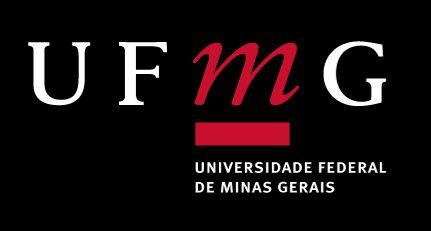Capital social, análise de redes e os mecanismos intermediários do sistema migratório Brasil/EUA
DOI:
https://doi.org/10.35699/2237-549X..13280Keywords:
Social capital, Social network analysis, Intermediate mechanisms, Migratory systemAbstract
In this article the authors propose the revision of the conventional (essentialist) approach on social capital – which tends to reify its relational resources into social constructs like solidarity –, pointing to the more adequate theoretical and methodological propositions of the Social Network Analysis (SNA). Further, the relational approach on social capital is applied to the empirical analysis of the international migration system between Brazil and USA, viewed as a displacement process across the physical and social space in which the “intermediate mechanisms” (brokers) accrue for practical and expressive resources in their social networks, entailing a rather specific social capital in the system.
Downloads
References
ADLER, P. S. e KWON, S. Social Capital: the Good, the Bad and the Ugly, paper apresentado à Academy of Management Meeting. Chicago, 1999.
BORJAS, G. Labor Economic. McGraw Hill: New York, 1996.
BOURDIEU, P. Le Capital Social. Actes de la Recherche en Sciences Sociales, 1980, 3, p. 2-3.
BRASS, D. Power in Organizations: a social network perspective. Research in Politics and Society, 1992, 4, p. 295- 323.
BURT, R. Structural Holes. University of Chicago Press, Chicago, 1992.
BURT, R.. The Network Structure of Social Capital. In; Robert Sutton e Barry Staw (eds.) Research in Organizational Behavior, 2000, vol. 22, JAI Press, Greenwich.
COLEMAN, J. S. Social Capital in the Creation of Human Capital. American Journal of Sociology, 1988, 94, p. 95-120.
COLEMAN, J. S. Foundations of Social Theory. Harvard University Press: Cambridge, 1990.
COLEMAN, D. Population Regulation: a long range view. In; David Coleman e Roger Schofield (eds.). The State of Population Theory: forward from Malthus, Blackwell, Oxford, 1986.
COOK, K. et al. The Distributive Power in Exchange Networks: theory and experimental results. American Journal of Sociology, 1983, 89: 275-305.
DEGENNE, A. e FORSÉ, M. Introducing Social Networks. Sage Publications, London, 1999.
ENGLE, S. Structural Holes and Simmelian Ties: Exploring Social Capital, Task Interdependence and Individual Effectiveness. Phd Thesis, University of North Texas, 1999.
FAZITO, Dimitri. Reflexões sobre os sistemas de migração internacional: proposta para uma análise estrutural dos mecanismos intermediários. Tese (Doutorado em Demografia) — Centro de Desenvolvimento e Planejamento Regional, Universidade Federal de Minas Gerias, Belo Horizonte. 2005, 204p
FERNÁNDEZ-KELLY, M. Social and Cultural Capital in the Urban Ghetto: implications for the economic sociology of immigration. In; Alejandro Portes (Ed.) The Economic Sociology of Immigration. Russell Sage Foundation: New York, 1995.
FREEMAN, L. Centrality in Social Network: a conceptual clarification. Social Networks, 1979, 1: 215-239.
FUKUYAMA, F. Capital Social y Desarollo: la agenda venidera. In; Raúl Atria et al. (eds.). Capital Social y Reducción de la Pobreza en América Latina y el Caribe: en busca de un nuevo paradigma, CEPAL: Santiago, 2003.
GRANOVETTER, Mark The Strengh of Weak Ties. American Journal of Sociology, 1973, 78: 1360-80.
GRANOVETTER, Mark. Economic Action and Social Structure: the problem of embeddedness. American Journal of Sociology, 1985, 91: 481-510.
GRANOVETTER, Mark. The Economic Sociology of Firms and Entrepreneurs. In; Alejandro Portes (Ed.). The Economic Sociology of Immigration. Russell Sage Foundation: New York, 1995
GRIECO, E. The Effects of Migration on the Establishment of Networks: caste disintegration and reformation among the Indians of Fiji. International Migration Review, 1998, 32(3): 704-36.
KNOKE, D. e KUKLINSKY, J. Network Analysis. Sage Publications, Series: Quantitative Applications in the Social Sciences, Newsbury, 1982.
KRACKHARDT, D. Groups, Roles and Simmelian Ties in Organization, working Paper. Heinz School of Public Policy and Management, Carnegie Mellon University, Pittsburgh, 1996.
LIN, Nan. Building a Network Theory of Social Capital. In; Nan Lin et al. (eds.) Social Capital: theory and research, Aldine de Gruyter Editors, New York, 2001 pp. 3-29.
MASSEY, D. et al. Return To Aztlan, The Social Process of International Migration From Western Mexico. University of California Press, Berkeley, 1987.
PORTES, A. Economic Sociology and the Sociology of Immigration: a conceptual overview. In; Alejandro Portes (Ed.). The Economic Sociology of Immigration, Russell Sage Foundation, New York, 1995.
PORTES, A. e SENSENBRENNER, J. Embeddedness and Immigration: notes on the social determinants of economic action. American Journal of Sociology, 1993, 98: 1320-50.
PUTNAM, R. Making Democracy Work. Princeton: Princeton University Press, 1993.
SAYAD, Abdelmalek. O retorno, elemento constitutivo do migrante. Travessia-Revista do Migrante.São Paulo, v. 13, número especial, p. 7-32, jan. 2000.
SIMMEL, G. The Sociology of Georg Simmel. Ed. K. Wolff, New York and Glencoe, Free Press, 1950.
SIMMEL, G. Conflict and The Web of Group Affiliations. New York and Glencoe, Free Press, 1955.
SOARES, W. Para Além da Concepção Metafórica de Redes Sociais: fundamentos teóricos da circunscrição topológica da migração internacional In; Anais (CD-ROM) do XIII Encontro Nacional de Estudos Populacionais, ABEP, Ouro Preto, Brasil, 2002.
TILLY, C. Transplanted Networks. In; Virginia Mclaughlin (ed.) Immigration Reconsidered: History, Sociology and Politics. Oxford University Press, New York, 1990.
WELLMAN, B. The Network Community. In; Barry Wellman (ed.) Networks in The Global Village, disponível on-line no site do Prof. Wellman, Sociology Department, University of Toronto, Canada. 1999.
ZHOU, M. e BANKSTON III, C. Social Capital and the Adaptation of the Second Generation: the case of Vietnamese youth in New Orleans. International Migration Review,1996, 28 (4): 821-45.
Downloads
Published
How to Cite
Issue
Section
License
Copyright (c) 2010 Dimitri Fazito, Weber Soares

This work is licensed under a Creative Commons Attribution 4.0 International License.
Os artigos desta revista obedecem a licença Creative Commons — Attribution 4.0 International — CC BY 4.0









